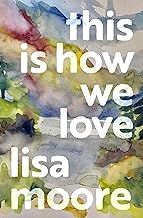Here's my latest article (book recommendations for Christmas lists) written for The Madawaska Valley Current: https://madvalleycurrent.com/2022/11/27/book-recommendations-for-christmas-lists/
Book Recommendations for
Christmas Lists
At this time of year, I
seem to do a lot of writing: Christmas
cards, a Christmas shopping list, menus for holiday get-togethers, and that very
important letter to Santa. In December I
also compile a list of favourite books read during the past year. Here are some of those favourites from 2022 which
you might request from Santa or gift to the book lovers on your list.
Tasting Sunlight by Ewald ArenzThis is a magical novel. Sally, a 17-year-old girl who has escaped
from a clinic where she was being treated for anorexia, meets Liss, a woman in
her forties who lives alone on a large farm.
Sally helps Liss with various tasks on the farm and slowly a friendship
develops between the two. As their
backstories are revealed, it becomes obvious that both are in need of healing. Written in beautiful prose, this uplifting
book reminds us of the beauty of human connection and the healing power of nature.
The Sea Between Two
Shores by Tanis
Rideout
The Stewart family
from Toronto is invited by the Tabé family to the South Pacific island of
Vanuatu to attend a reconciliation ceremony for their ancestors. The families discover that they are connected
by devastating losses they have both suffered and by the actions of their
ancestors. This complex novel examines
grief and the true meaning of reconciliation.
It will leave you thinking about the actions of Canadians in the past
and our behaviour in the present. (I also
recommend this Canadian author’s other novel, Above All Things, a fictionalized account of George Mallory’s third
attempt to conquer Mount Everest, in 1924, interspersed with the viewpoint of
his wife as she awaits word about her husband.)
Horse by Geraldine Brooks
Based on the true
story of the record-breaking thoroughbred Lexington, this book examines antebellum
horseracing, the sport of white privilege relying on the exploited labour of black
horsemen. Through sections set in the
present, it also emphasizes that racism has not been eradicated. Even those with no interest in the sport will
find reading this novel an emotional journey:
anger and sadness are felt in equal measure.
Fall by West Camel
Aaron and Clive
Goldsworthy are 62-year-old twins who have been estranged for over 40
years. Aaron is the sole occupant of Marlowe
Tower, a 1970s housing development designed by their mother in London. Clive, a successful property developer, wants
to turn the tower into luxury flats, but Aaron refuses to move. When two women who lived in the tower in the
1970s move back in, the brothers must confront what happened the summer of 1976
and its aftermath. The title is perfect
because there are physical falls and fallings-out. People’s lives and the housing estate are
falling apart. Reading the novel is a process of slowly watching everything
fall into place. And readers will fall
in love with this extraordinary, multi-layered novel.
Whisper of the Seals by Roxanne Bouchard
This is the third of
the Detective Moralès series set in Canada’s Gaspé Peninsula. Tasked with
monitoring a seal hunt, Simone Lord, a Fisheries Officer, boards a trawler. Meanwhile Det. Moralès is
investigating the savage beating of a teenager.
As expected, that case leads to the trawler where Simone finds herself
in increasing danger from the antagonistic crew. Readers who enjoy detective series might want
to start with We Were the Salt of the Sea
and The Coral Bride, the first two
books. Though these are less polished,
they develop characters and establish their relationships.
The Precious Jules by Shawn Nocher
Ella Jules has spent
32 years of her life in the Beechwood Institute whose clients are
intellectually challenged. Lynetta, who
has been her caregiver for all that time, has applied to be her guardian
because the institute is closing. Then
Ella’s parents file with the courts to have Ella live with them, though their
other adult children want to convince them that this is not a good idea. This family drama is heartbreaking,
heartwarming, and thought-provoking.
Young Mungo by Douglas Stuart
This is one of the
most powerful books I’ve ever read.
Mungo Hamilton, a 15-year-old living in Glasgow in the 1990s, is on a
weekend fishing trip to an isolated loch with two men his mother met at an AA
meeting. The trip is intended to toughen
him up. A second storyline shows Mungo’s
family life and describes the events leading up to the fishing trip. The novel, which examines homophobia in an
intolerant culture, is raw and gritty. A
couple of years ago, I recommended Shuggie
Bain by the same author; it examines the complex relationship between a
child and an alcoholic parent.
This is How We Love by Lisa Moore
Newfoundland is one of
my favourite places to visit, and I love novels set in that province. This one is set in a hospital in St. John’s
where 21-year-old Xavier is fighting for his life after being badly beaten and
stabbed twice. His mother sits by his
bedside as the snowstorm of the century (January 2020) rages outside. While we wait to see if he will survive, the
reader gradually learns what led to the attack and is introduced to Xavier’s
extended family and friends and their backstories. The book examines various kinds of families
and how people show love in different ways.
Complete reviews of
all 12 titles mentioned (and many more) can be found on my blog at https://schatjesshelves.blogspot.com/.
Happy
Holidays! Happy Reading!















